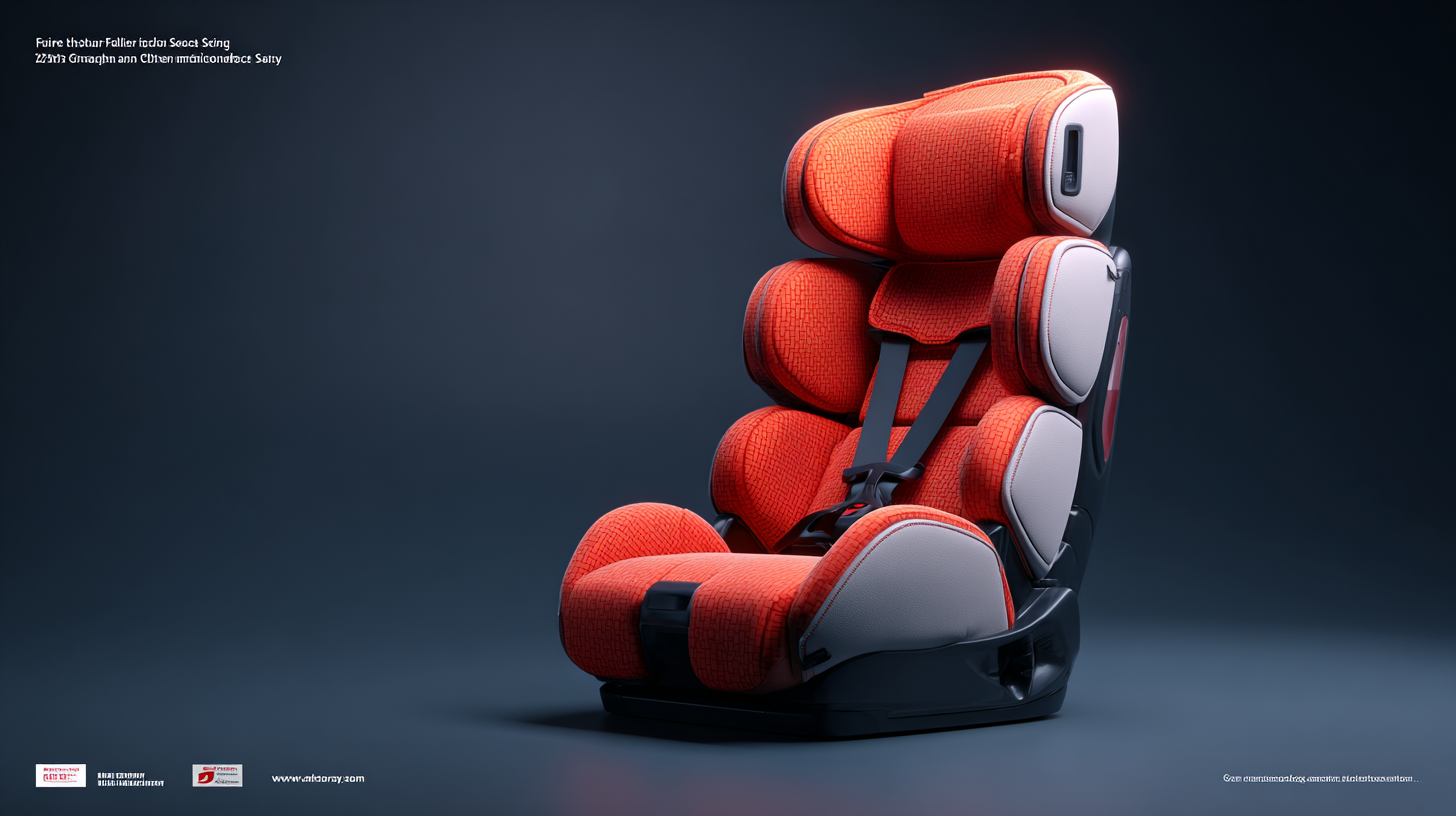As we look toward 2025, the landscape of Child Safety Seats is undergoing a significant transformation driven by innovations and evolving consumer demands. With an increasing awareness of child safety and a growing emphasis on technological advancements, manufacturers are embracing digital solutions that enhance the functionality and effectiveness of safety seats. From smart sensors that monitor the proper installation to advanced materials that provide better protection, these innovations are not only improving safety but also offering greater convenience to parents.
 Furthermore, global trends indicate a shift in consumer preferences, leading to a higher demand for versatile and design-oriented Child Safety Seats that meet the aesthetic and practical needs of modern families.
This blog explores the exciting developments shaping the future of Child Safety Seats and their implications for parents around the world, as we navigate the balance between safety, innovation, and style.
Furthermore, global trends indicate a shift in consumer preferences, leading to a higher demand for versatile and design-oriented Child Safety Seats that meet the aesthetic and practical needs of modern families.
This blog explores the exciting developments shaping the future of Child Safety Seats and their implications for parents around the world, as we navigate the balance between safety, innovation, and style.
The landscape of child safety seats is evolving rapidly, driven by innovative technologies that enhance their designs and functionality. One significant trend is the integration of smart technology, such as sensors that monitor the child's position and alert parents if the seat is not properly secured. These advanced features not only offer peace of mind but also adapt to the child's growth, ensuring optimal safety at every stage.
Additionally, advancements in materials science are leading to lighter yet stronger seat structures. Manufacturers are now using high-strength composites that provide superior safety without the bulk. This shift not only makes installation easier for parents but also contributes to better fuel efficiency in vehicles, as lighter seats reduce overall weight.
Tips for parents looking to invest in a new child safety seat include always checking for the latest models equipped with the newest safety features. Ensure that the seat is compatible with your vehicle and consider ease of installation, as a properly installed seat is crucial for safety. Lastly, keep an eye on recalls and safety ratings to ensure that your chosen seat meets the highest standards.
As regulatory frameworks evolve globally, the innovation of child safety seats is significantly influenced. Data from the Global Vehicle Safety Initiative indicates that stringent regulations, including the adoption of advanced testing protocols for restraint systems, are projected to boost the demand for more sophisticated child safety seats by 20% by 2025. Manufacturers are compelled to integrate cutting-edge technologies, such as advanced crash sensors and IoT connectivity, to comply with these regulations and enhance child protection.
To ensure compliance with new standards, parents should look for child safety seats that meet or exceed the latest crash test ratings. A report from the National Highway Traffic Safety Administration (NHTSA) shows that seats equipped with side-impact protection are 30% more effective in safeguarding children during a collision. Additionally, parents should regularly check for recalls and stay informed about the latest safety advancements, as the landscape for child safety is evolving rapidly.
When choosing a child safety seat, consider features like adjustable harness systems and easy installation mechanisms to enhance usability and security. According to a recent survey by the Child Passenger Safety Association, parents who receive proper installation training are 75% more likely to secure their child correctly. Investing in a safety seat that aligns with current regulations is not just about compliance; it’s about ensuring the well-being of your child on the road.

As we look towards 2025, the landscape of child safety seats is evolving rapidly, guided by changing consumer preferences and technological advancements. Parents today are more informed and safety-conscious than ever, prompting a shift towards products that not only provide maximum protection but also enhance convenience and ease of use. The demand for child safety seats with advanced safety features such as smart sensors, adjustable support systems, and integrated compatibility with modern vehicles is on the rise. Consumers are increasingly seeking products that seamlessly integrate into their lifestyles, reflecting a more holistic approach to child safety and mobility.
Moreover, sustainability is becoming a key factor in purchasing decisions. Environmentally conscious parents are favoring brands that utilize eco-friendly materials and sustainable manufacturing practices. Innovations in recycling old seats and using biodegradable components are attracting the attention of modern consumers who prioritize eco-responsibility alongside safety. Additionally, the trend towards personalized seating solutions is gaining traction, with parents looking for options that cater to the unique needs of their children, from age-specific designs to customizable features that can grow with them. This dynamic shift in consumer preferences is driving manufacturers to adopt new technologies and practices, ensuring that the future of child safety seats aligns with the expectations and values of today's families.
The child safety seat market is poised for significant growth, driven by increasing awareness of child safety and evolving regulations. According to a recent market research report by Grand View Research, the global child safety seat market was valued at approximately $4.6 billion in 2022 and is expected to expand at a compound annual growth rate (CAGR) of 5.6% from 2023 to 2030. This growth presents substantial opportunities for manufacturers to innovate and enhance their product offerings to meet changing consumer demands.
Several trends are shaping the child safety seat industry as we approach 2025. The increasing emphasis on the use of advanced materials and smart technology in product design is anticipated to enhance safety features significantly. Reports from MarketsandMarkets indicate that features like crash detection, automatic adjustment, and integration with mobile applications are becoming highly desirable among parents. Furthermore, the rise of online retail channels is expected to drive accessibility and convenience for consumers, facilitating the growth of the market in emerging economies where awareness about child safety seats is still developing. As these trends continue to evolve, they will play a critical role in shaping a safer future for children around the globe.
As the demand for child safety seats evolves, the focus on sustainability is becoming paramount in the industry. With global parents increasingly prioritizing eco-friendly solutions, manufacturers are innovating to create products that are not only safe but also environmentally responsible. Reports indicate that the global market for sustainable baby products is expected to grow by over 20% by 2025, highlighting a significant shift in consumer preferences. Innovations such as recyclable materials, non-toxic fabrics, and energy-efficient manufacturing processes are becoming standard features in the latest designs.
Moreover, understanding the appropriate age and size for transitioning children to the front seat remains a critical discussion among parents. According to industry safety guidelines, children are generally recommended to sit in the back seat until at least age 13, as this significantly reduces the risk of injury in the event of an accident. This safety statistic is complemented by the push for child safety seats that utilize sustainable materials, with studies showing that eco-friendly seats are not only safer but also reduce carbon footprints, making them a smart choice for environmentally conscious families. As we look ahead to 2025, the integration of sustainability into child safety seats will undoubtedly reflect broader trends in consumer behavior, wellness, and environmental responsibility.

TradeManager
Skype
VKontakte

